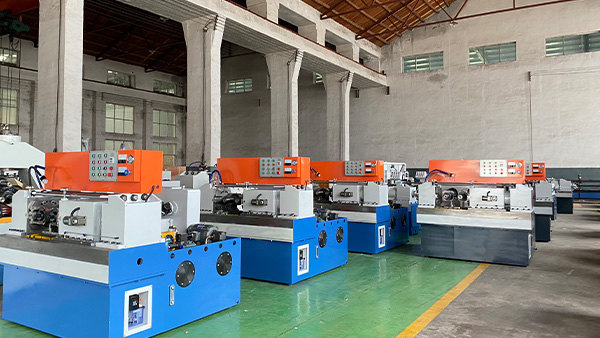
-
 Afrikaans
Afrikaans -
 Albanian
Albanian -
 Amharic
Amharic -
 Arabic
Arabic -
 Armenian
Armenian -
 Azerbaijani
Azerbaijani -
 Basque
Basque -
 Belarusian
Belarusian -
 Bengali
Bengali -
 Bosnian
Bosnian -
 Bulgarian
Bulgarian -
 Catalan
Catalan -
 Cebuano
Cebuano -
 Corsican
Corsican -
 Croatian
Croatian -
 Czech
Czech -
 Danish
Danish -
 Dutch
Dutch -
 English
English -
 Esperanto
Esperanto -
 Estonian
Estonian -
 Finnish
Finnish -
 French
French -
 Frisian
Frisian -
 Galician
Galician -
 Georgian
Georgian -
 German
German -
 Greek
Greek -
 Gujarati
Gujarati -
 Haitian Creole
Haitian Creole -
 hausa
hausa -
 hawaiian
hawaiian -
 Hebrew
Hebrew -
 Hindi
Hindi -
 Miao
Miao -
 Hungarian
Hungarian -
 Icelandic
Icelandic -
 igbo
igbo -
 Indonesian
Indonesian -
 irish
irish -
 Italian
Italian -
 Japanese
Japanese -
 Javanese
Javanese -
 Kannada
Kannada -
 kazakh
kazakh -
 Khmer
Khmer -
 Rwandese
Rwandese -
 Korean
Korean -
 Kurdish
Kurdish -
 Kyrgyz
Kyrgyz -
 Lao
Lao -
 Latin
Latin -
 Latvian
Latvian -
 Lithuanian
Lithuanian -
 Luxembourgish
Luxembourgish -
 Macedonian
Macedonian -
 Malgashi
Malgashi -
 Malay
Malay -
 Malayalam
Malayalam -
 Maltese
Maltese -
 Maori
Maori -
 Marathi
Marathi -
 Mongolian
Mongolian -
 Myanmar
Myanmar -
 Nepali
Nepali -
 Norwegian
Norwegian -
 Norwegian
Norwegian -
 Occitan
Occitan -
 Pashto
Pashto -
 Persian
Persian -
 Polish
Polish -
 Portuguese
Portuguese -
 Punjabi
Punjabi -
 Romanian
Romanian -
 Russian
Russian -
 Samoan
Samoan -
 Scottish Gaelic
Scottish Gaelic -
 Serbian
Serbian -
 Sesotho
Sesotho -
 Shona
Shona -
 Sindhi
Sindhi -
 Sinhala
Sinhala -
 Slovak
Slovak -
 Slovenian
Slovenian -
 Somali
Somali -
 Spanish
Spanish -
 Sundanese
Sundanese -
 Swahili
Swahili -
 Swedish
Swedish -
 Tagalog
Tagalog -
 Tajik
Tajik -
 Tamil
Tamil -
 Tatar
Tatar -
 Telugu
Telugu -
 Thai
Thai -
 Turkish
Turkish -
 Turkmen
Turkmen -
 Ukrainian
Ukrainian -
 Urdu
Urdu -
 Uighur
Uighur -
 Uzbek
Uzbek -
 Vietnamese
Vietnamese -
 Welsh
Welsh -
 Bantu
Bantu -
 Yiddish
Yiddish -
 Yoruba
Yoruba -
 Zulu
Zulu
Innovative Solutions in ODM Thread Rolling Equipment for Enhanced Manufacturing Efficiency and Precision
The Importance of ODM Thread Rolling Equipment in Modern Manufacturing
In today's fast-paced manufacturing landscape, the demand for precision, efficiency, and quality is at an all-time high. One essential component that plays a significant role in achieving these goals is ODM (Original Design Manufacturer) thread rolling equipment. This specialized machinery is crucial in producing high-quality threaded components that find applications in various industries, including automotive, aerospace, construction, and electronics.
Understanding Thread Rolling
Thread rolling is a cold-forming process that generates threads on cylindrical workpieces. Unlike traditional cutting methods, which remove material to create the desired thread profile, thread rolling displaces material, resulting in enhanced strength and uniformity. This process is particularly advantageous for producing high-volume threaded parts because it significantly reduces material waste and energy consumption.
ODM thread rolling equipment is designed to cater to the specific needs of manufacturers. With a custom-designed approach, ODM service providers offer machinery that aligns precisely with the manufacturers' operational requirements. This bespoke equipment can be tailored to accommodate different thread sizes, shapes, and materials, thereby making it an invaluable asset for businesses looking to optimize their production processes.
Advantages of ODM Thread Rolling Equipment
1. Increased Efficiency The automation and precision of ODM thread rolling machines allow for faster production rates. These machines can roll multiple threads simultaneously, drastically reducing cycle times and increasing output.
2. Enhanced Quality Consistency is key in manufacturing. ODM thread rolling equipment ensures that each threaded component meets rigorous quality standards. The cold-forming process results in fewer defects, better surface finishes, and stronger threads compared to traditional methods.
odm thread rolling equipment

3. Material Conservation Since thread rolling minimizes material waste by displacing rather than cutting it, manufacturers can significantly reduce their material costs. This is particularly relevant in industries where raw materials are expensive or in short supply.
4. Flexibility and Customization ODM equipment can be customized to meet specific production needs. Whether a manufacturer requires unique thread profiles or is working with exotic materials, ODM providers can design machines that accommodate these requirements.
5. Reduced Lead Times With tailored solutions, manufacturers can often see a reduction in lead times, as the equipment is specifically optimized for their processes. This means faster turnaround for products, enhancing competitiveness in the marketplace.
Applications Across Industries
The applications for ODM thread rolling equipment are vast. In the automotive industry, it is commonly used to create critical components such as bolts, screws, and fasteners that require precise threading for assembly. In aerospace, where reliability is paramount, rolling equipment is employed to produce lightweight and high-strength threaded parts that meet stringent safety standards.
Moreover, in electronics manufacturing, ODM thread rolling equipment can be pivotal in crafting components that withstand vibrations and environmental stressors, often seen in complex circuitry and device enclosures.
Conclusion
As manufacturers continue to adapt to the ever-evolving demands of their respective industries, the significance of ODM thread rolling equipment cannot be overstated. The combination of efficiency, quality, and customization helps businesses not only meet their production goals but also enhance their overall competitiveness. Investing in ODM solutions enables manufacturers to stay ahead of the curve, ensuring they can respond swiftly to market changes while maintaining the highest standards of precision in their products. As the demand for high-quality threaded components grows, so too will the reliance on innovative ODM thread rolling technologies.
